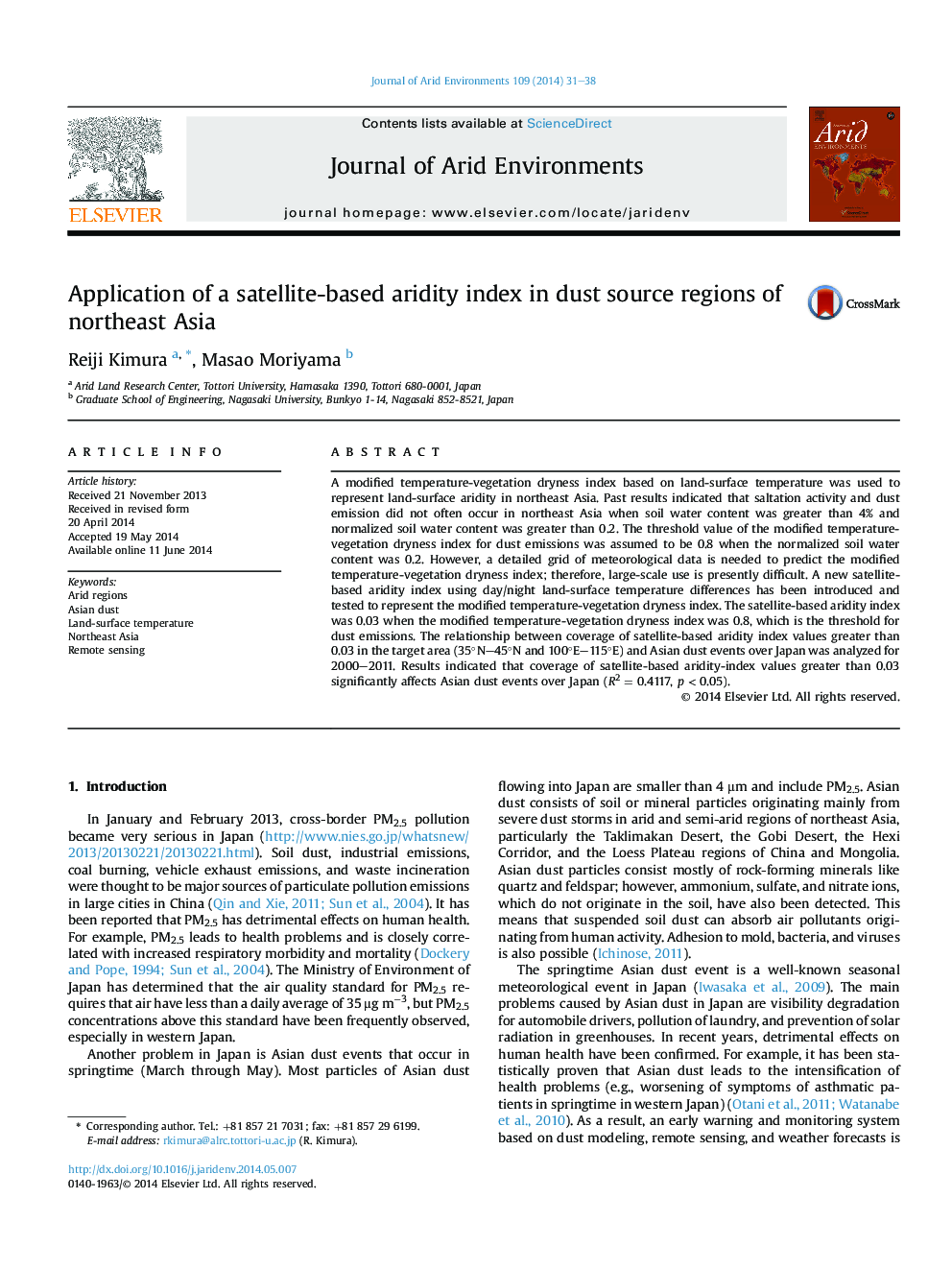| Article ID | Journal | Published Year | Pages | File Type |
|---|---|---|---|---|
| 4392977 | Journal of Arid Environments | 2014 | 8 Pages |
•A new satellite-based aridity index (SbAI) was introduced.•The global distribution of SbAI was compared with standard aridity index.•Threshold value of surface soil water content for dust emission was examined.•Coverage of SbAI over 0.03 significantly affects Asian dust events over Japan.
A modified temperature-vegetation dryness index based on land-surface temperature was used to represent land-surface aridity in northeast Asia. Past results indicated that saltation activity and dust emission did not often occur in northeast Asia when soil water content was greater than 4% and normalized soil water content was greater than 0.2. The threshold value of the modified temperature-vegetation dryness index for dust emissions was assumed to be 0.8 when the normalized soil water content was 0.2. However, a detailed grid of meteorological data is needed to predict the modified temperature-vegetation dryness index; therefore, large-scale use is presently difficult. A new satellite-based aridity index using day/night land-surface temperature differences has been introduced and tested to represent the modified temperature-vegetation dryness index. The satellite-based aridity index was 0.03 when the modified temperature-vegetation dryness index was 0.8, which is the threshold for dust emissions. The relationship between coverage of satellite-based aridity index values greater than 0.03 in the target area (35°N–45°N and 100°E–115°E) and Asian dust events over Japan was analyzed for 2000–2011. Results indicated that coverage of satellite-based aridity-index values greater than 0.03 significantly affects Asian dust events over Japan (R2 = 0.4117, p < 0.05).
